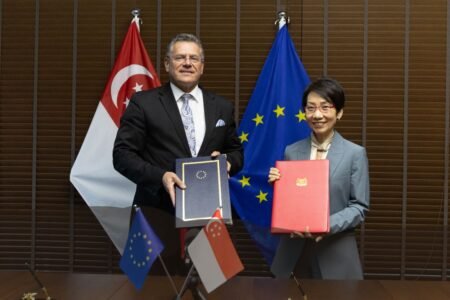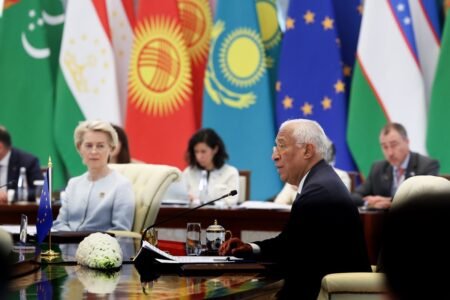The European Commission has made a proposal to adapt the EU’s rulebook to tackle unfair competition from dumped and subsidised imports to the contemporary challenges facing the EU’s economy. The Commission says the proposed changes would make the EU trade defence work better for all stakeholders, including both EU producers and importers. Anti-dumping and anti-subsidy instruments will be more efficient and better enforced to shield EU producers from unfair practices of foreign firms and from any risk of retaliation. At the same time, importers will enjoy greater predictability in terms of changing duty rates, which will make their business planning easier. The entire system will become more transparent and user-friendly.
Advertisement
What are trade defence instruments (TDIs)?
Trade defence instruments – anti-dumping, anti-subsidy and safeguards address unfair practices occurring in international trade. Anti-dumping is the most frequently used form of trade defence. According to the World Trade Organisation (WTO), all its members, including the EU, have the right in some well-defined situations to impose additional duties on imported products to prevent damage to their domestic industry.
An EU industry can complain to the European Commission if it suffers from unfair competition as a result of an imported product being subsidised by its country of origin or being sold in the EU at prices lower than its market value. The complaint must be supported by evidence of the unfair practice and of the economic difficulties caused by it. The European Commission investigates the allegations and, if justified, proposes anti-dumping or anti-subsidy measures.
The European Union is a moderate user of trade defence instruments. In terms of trade volume, these measures only have impact on around 0.25% of EU imports. At the end of 2012, the EU had 102 anti-dumping (AD) and 10 anti-subsidy (AS) measures in force and an additional 19 anti-dumping and 6 anti-subsidy ongoing investigations initiated during the year. In comparison, according to the first-half 2012 data submitted to the WTO, the US have 232 AD and 50 AS measures in force, India – 222 AD measures, Turkey – 118 AD and 1 AS measure, China – 110 AD and 4 AS measures and Argentina – 87 AD and 1 AS measure.
Why do the EU’s TDIs need to be adapted?
The EU TDI rules have remained largely unchanged for more than 15 years. The last significant TDI revision took place in 1995 to implement the Uruguay Round of multilateral trade negotiations. An amendment was made in 2004 to reflect changes to the decision making process in the Council (simple majority to reject a Commission proposal instead of simple majority in favour). A “Green Paper” drawn up in 2006/2007 in an attempt to reform the system was not followed up due to a wide divergence of views.
At the start of his mandate in January 2010, Commissioner De Gucht told the European Parliament that he would review trade defence instruments only once the WTO Doha Round was completed. The multilateral talks have stalled since and with them the scope for adapting the EU’s trade defence instruments within the multilateral framework.
Yet the economic environment has evolved over recent years and unfair trade practices have increased. Also, changing trade patterns and difficult economic conditions mean the impact of trade defence measures on importers and users need to be better taken into account. It was against this background that in autumn 2011 Commissioner De Gucht launched the revision process that resulted in today’s Commission proposal.
What is the proposal based on?
In early 2012, the Commission held a public consultation that attracted more than 300 replies from a variety of stakeholders including EU producers, importers, users, consumer groups and Member States. In May 2012, a conference organised by DG Trade offered an additional opportunity for 200 participants to express their views. The Commission carefully analysed all the suggestions made on those occasions to identify the main issues for revision. An independent study finalised in March 2012 evaluated the EU’s current trade defence instruments and provided more information about the areas in need of review. Together with the Commission’s extensive experience of administering trade defence instruments on a daily basis, all those contributions shaped the proposal presented today.
What are the main types of changes proposed?
The Commission proposes improvements in six priority areas identified early in the revision process:
- Increased transparency and predictability;
- Fight against retaliation;
- Better effectiveness and enforcement;
- Easier procedural cooperation;
- Optimisation of the review process and
- Codification of certain practices in the legislation.
What are the gains for particular groups of stakeholders?
Trade defence instruments have different impacts on each of the two main stakeholders’ categories: EU producers and importers/users. While preparing the proposal, the Commission was conscious of the need to strike a balance to make the instruments more efficient and better adapted to the difficult economic climate affecting all stakeholders.
Producers will benefit, among others, from the Commission’s ex-officio initiative to launch investigations on its own, without an official complaint by the EU industry. This possibility will be particularly important when the risk of retaliation against companies asking for trade defence instruments is high. The Commission’s own initiative will reinforce the producers’ right to benefit from legal protection.
Producers will also benefit from higher levels of protection in certain circumstances where the EU proposes not to apply its usual ‘lesser duty rule’. The EU would now use its right under WTO law to impose additional duties that are equal to the dumping/subsidy margin and not only sufficient to remove the injury caused to the Union industry, as it currently does. Increasing subsidisation of imports as well as the manipulation of raw material supplies and prices by exporting countries would be covered by this proposal.
Importers/users will benefit from greater predictability regarding the anti-dumping and anti-subsidy measures. They will be informed in advance of any decision to impose provisional anti-dumping or anti-subsidy duties and of an intention not to impose such measures. This will make business planning easier for importers.
Importers will also benefit from the proposed refund of duties where expiry reviews show there is no justification to continue the measure. Currently while an expiry review is ongoing duties continue to be collected and are not refunded regardless of the outcome of the review. The proposal to refund these duties ensures fairer treatment of importers in these cases.
All stakeholders will benefit from more transparency thanks to the proposed guidelines which will cement current practice in four complex areas of the trade defence procedures. Also the codification of certain practices in the legislation will ensure greater legal certainty useful for all.
What is the purpose of the draft guidelines?
The draft guidelines spring from current practice. The objective of the guidelines is to improve transparency and knowledge about the complex and technical aspects of the investigations. The rules governing the decision whether there is a Union interest to take action, the choice of an analogue country in cases involving non-market economy countries, the calculation of an injury margin and the methodology of an expiry review will be clarified. Stakeholders will have an opportunity to comment on the draft guidelines through a public consultation.
What happens next?
Each of the three elements of this package – the legislative proposal, the draft guidelines and other non-legislative changes need to be considered separately:
The legislative proposal will follow the ordinary legislative procedure in the Council and the European Parliament in the course of 2013 and 2014.
Staff Working Documents setting out draft guidelines are now subject to a public consultation. Interested stakeholders can submit their views during the coming three months. At the end of that period the Commission will analyse the comments. The finalised guidelines will be adopted by the Commission and published on the DG Trade website, as well as in the EU Official Journal.
The non-legislative changes proposed will be implemented in practice gradually in the coming months.
EC website: the EU Trade Defence system
Source: European Commission







